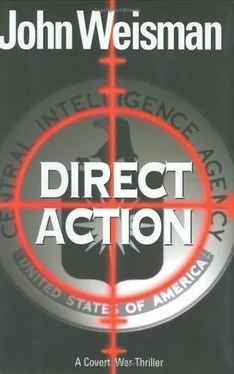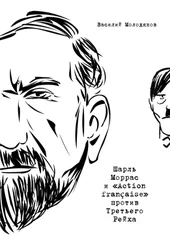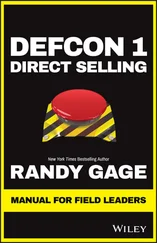7P.M. The interrogation center was ready for painting. Tom did a walk-through. It was quite remarkable-as if a little piece of Qadima prison had been flown from Israel and enclosed in a well-insulated outer shell here on the St. Denis-Aubervilliers border. From the outside, you were obviously looking at a stage set. But from the inside, the place was totally, frighteningly, realistically convincing. It was built around a corridor about twenty feet long. The corridor walls were real masonry-except the cinder blocks were a half-inch-thick facade. The floor was covered with thick rubber pads.
At each end, the corridor took a ninety-degree left turn-which ended after only four feet. But Hamzi wouldn’t ever be allowed to discover the ruse. On the right side of the corridor were four scarred steel doors, each one with a peephole five feet above the ground, and a food slot at waist level. Three of the doors were dummies-there was nothing behind them. The fourth led to the cell they’d keep Hamzi in.
Seven feet from the end of the corridor on the left-hand side was the doorway to the ten-foot-square interrogation room. They’d poured quick-setting concrete over inch-thick plywood to make the flooring. The door was made of solid steel and clanged like a prison door should when it was slammed shut. The furnishings were as close to Qadima as Milo’s crew could get their big hairy hands on. There was a utilitarian gray metal desk and two olive-drab straight-backed metal frame chairs. The legs of the interrogatee’s chair had been cut down before the chair itself was bolted into the floor so that Hamzi would sit three inches lower than Salah.
There were three video cameras hidden in the walls. Concealed in the center desk drawer was a voice stress recorder, whose remote readout screen Salah could see simply by glancing down. The temperature of the interrogation room could be adjusted within minutes to whatever Salah wanted.
Down the hall was Hamzi’s eight-by-six-foot cell. The cell was designed and furnished to Reuven’s specifications, which he’d phoned in at about two. There was a steel bed frame, on which rested a one-inch-thick mattress made of cheap foam covered in itchy, urine-stained canvas, a threadbare blanket the size of a bath towel, and a pillow that reeked of old vomit.
The cell’s floor, like the interrogation room’s, was concrete. And the bed, which sat jammed against the sidewall, was bolted into it. Four air vents played directly into the small space so that no matter where its occupant might try to hide, there would be an unending flow of cold or hot air. Directly under the bed was another small vent, camouflaged to look like an unused drain built into the floor. It was connected to the plastic conduit they’d use to pump the dread-causing odor into the cell.
The ceiling, which held three clusters of lights encased in dirty, thick, protective covers, was nine feet off the ground. Across from the bed was a single, perpetually dripping spigot that emptied into a six-inch open drain in the floor. The drain was rigged to clog on command. Next to the drain was a metal pail-the cell’s toilet. High on the wall above the spigot was a single frosted windowpane covered by bars and grime-covered wire mesh. The outside lighting could be adjusted-evening, morning, nighttime.
Then there were the speakers. They were positioned behind the walls and above the corridor. From a sound console in the control room that was being built in the warehouse office, every sound, from hobnail-boot steps, to the sounds of torture, to the traffic noise outside the “prison,” could be controlled.
The painting was critical. The cell had been finished in rough plaster that resembled the stuccolike material common to prisons all over the Middle East. Now it had to be “aged,” then covered with Arabic graffiti that had to appear as if it had been encrusted many times over with paint to remove the offending marks. The subtext of the cell was “Abandon hope, all ye who enter here.”
For its part, the interrogation room had to evoke a grungy, penal-institutional reaction that would-on sight alone-convince Hamzi that the only way he’d survive his ordeal was to tell everything he knew. To help achieve this, Salah had sent instructions to have the room painted in a drab, phlegmlike green.
As a further inducement, on Salah’s instructions, one of Milo’s Corsicans visited a butcher shop where he bought a kilo of fresh beef liver. The liver was perforated with a fork, then the bloody offal was sponged onto the floor adjacent to the chair. The resulting blood puddles were dried with a hair dryer to darken and age them, and then swiped with a towel, as if someone had tried to clean up the mess but hadn’t quite succeeded.
Tom spent a few minutes sitting in the interrogatee’s chair looking at the liver stains. They were subtle but evocative. Talk about performance art. You had to really work at the visual problem for a while before you finally comprehended what you were looking at. Which, of course, is why it was all so intimidating.
Sitting in the cut-down chair, Tom had to admit to himself that Salah’s trompe l’oeil mind game was terrifyingly effective. Painstaking attention to detail, he concluded, was everything in these circumstances.
7:15P.M. Reuven arrived to create the cell’s graffiti. Tom watched as the Israeli scratched messages, curses, and random numbers into the stucco with his fingernails, raking the walls so hard he drew blood. He was working like a man possessed. Less than twenty-four hours ago, Reuven had taken a life. And yet the effects of that violent act seemed not to show at all. Not outwardly, at least.
By 7:40, Reuven had finished and was ready for the painters. He pronounced his work satisfactory, washed his lacerated fingers with hydrogen peroxide, and headed out for de Gaulle to pick up Salah from the Air France flight.
Tom watched him slip out the door. He was an impenetrable, unreadable man, the Israeli was. He was to be sure a valuable ally. Indeed, 4627 was lucky to have found him because in the business of intelligence gathering, where personal connections and wide access were everything, Reuven had what seemed to be an endless supply of both. But once in a while over the last week and a half, Tom had found himself wondering what really drove Reuven Ayalon. What made the man tick?
The answer was, Tom Stafford had no idea. Reuven was as compartmentalized an individual as he’d ever met. There were circles within circles within circles. Which was why Tom now felt a hiccup of…unease. Being a street guy, a fisher of men, Tom had an unshakable instinct that there was something covert in play here-some hidden element to the Reuven Ayalon equation-that he didn’t yet comprehend, and perhaps never would. There was no logical rationale for this reaction. Except…whenever he started to think deeply about Reuven Ayalon-tried to get inside the man’s character and analyze his motivations-Sam Waterman’s old catchphrase “retirement is just another form of cover” always seemed to slip into Tom’s consciousness. Except…except…Reuven detested the current head of Mossad. He’d said as much-more than once. “He’s worse than Tenet,” is how the Israeli had put it. “Believe me-I didn’t have to leave my job. I wanted to. It was impossible to work anymore.”
11:30P.M. Salah came through the narrow warehouse doorway, bringing a sudden chill into the big space where Tom was pacing. He appeared smaller than Tom remembered him-but then, the last time he’d seen Salah, the man had been dressed in olive-drab coveralls. Now he wore a long black double-breasted overcoat that dwarfed his small frame. He carried a worn brown leather briefcase. Reuven followed behind with Salah’s luggage, a bright green soft-sided suitcase.
Читать дальше












